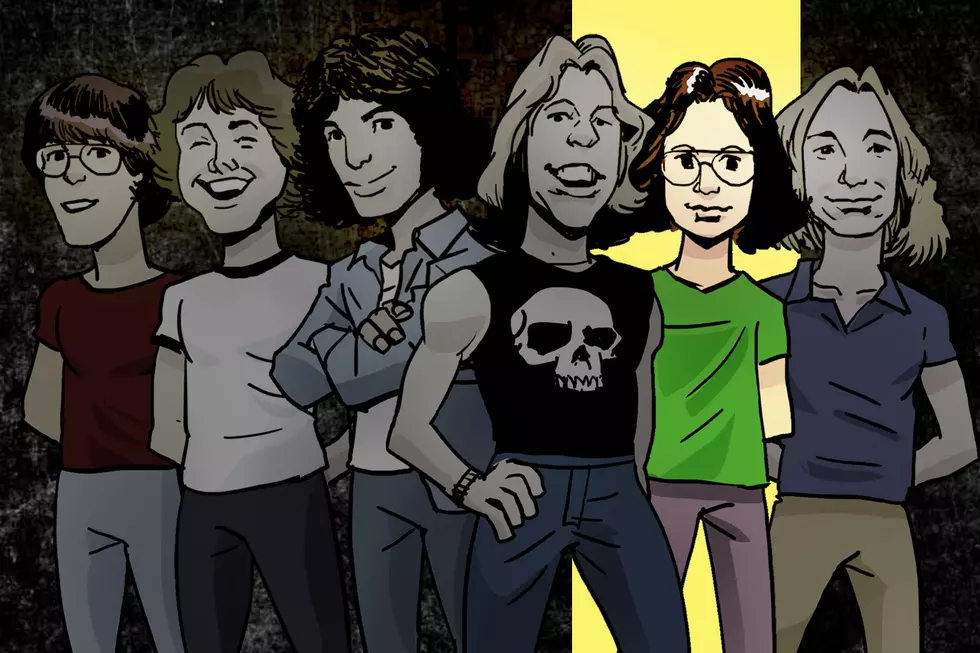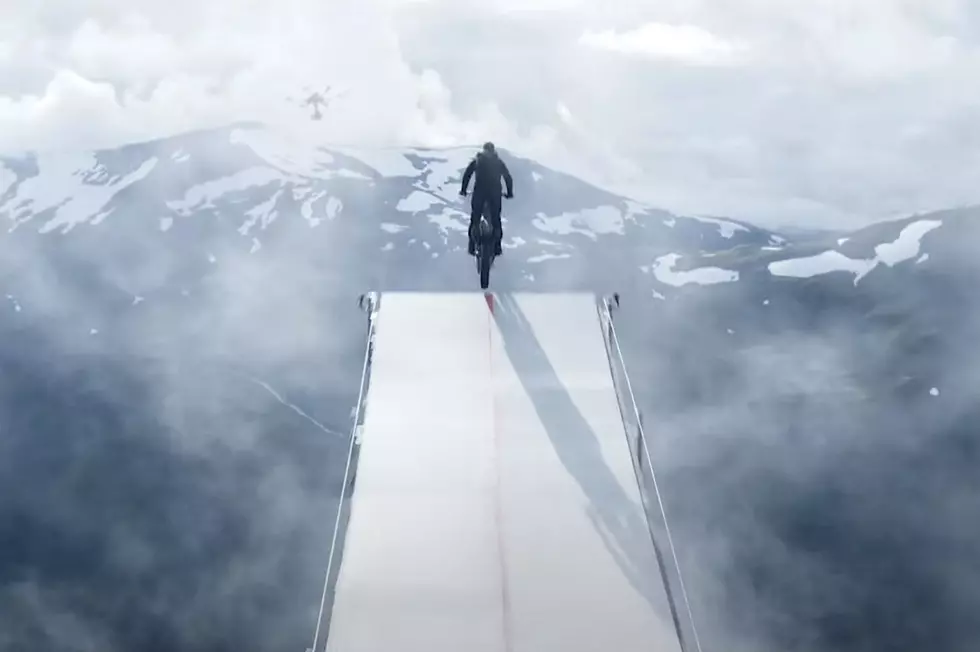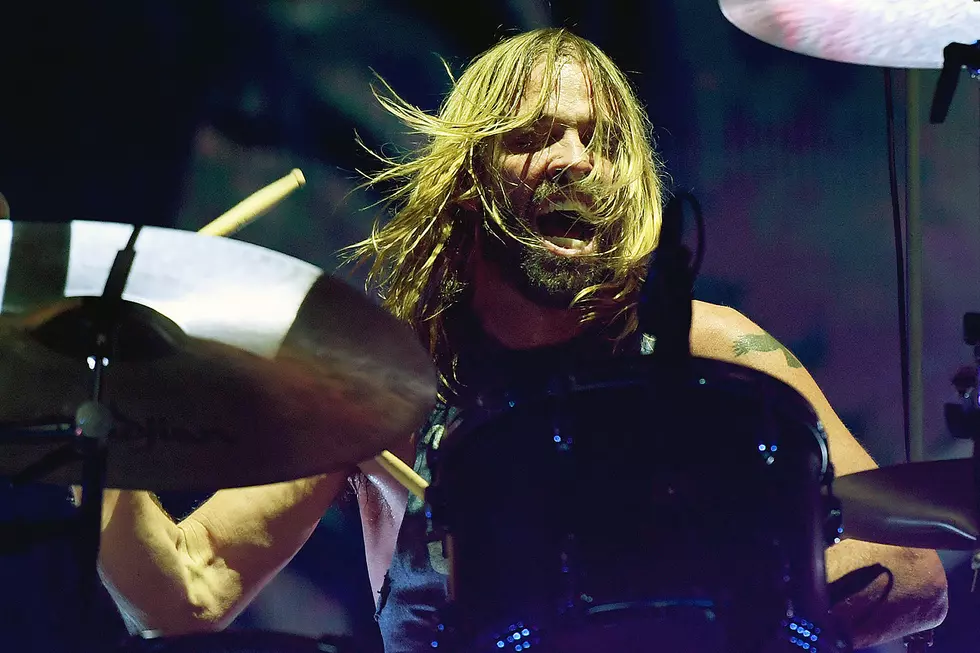
Kirk Hammett’s Childhood: Metallica Guitarist’s First 72 Seasons
Metallica’s 11th album, 72 Seasons, arrives on April 14. Frontman James Hetfield revealed that the LP’s title and theme revolve around an individual’s formative years. "Seventy-two seasons. The first 18 years of our lives that form our true or false selves,” he explained in a statement. In anticipation of the album, UCR looks back at the respective childhoods of Metallica’s current and former members:
Born in San Francisco to a Filipino-American government clerk and an Irish-American naval officer, Kirk Hammett sealed his fate at age five when he sprained his arm in a fight with his siblings. While recovering, the boy watched the 1962 horror/sci-fi film The Day of the Triffids on television.
“You know what I remember the most? Watching that movie, getting really, really scared, yet trying to draw these triffids that scared me so much,” Hammett noted in his book Too Much Horror Business. “It gave me another sense, another feeling – and I enjoyed this ‘other feeling' very, very much.”
Years before he’d amass one of the world’s most admired horror and sci-fi memorabilia collections – displayed in two books and a traveling museum exhibit – Hammett was a youngster who spent the 25 cents his parents gave him each day for school lunch money on comic books. He collected everything from Marvel to Mad, but held a special appreciation for horror magazines like Creepy, Eerie, The Monster Times and Famous Monsters of Filmland. He also put in hours at the Grand Theater on Mission Street, sometimes watching up to three movies a day for a quarter on weekends.
“They gave me a sense of self-awareness that I had previously not felt, a feeling of mortality and reality that Disney films and children films did not give me,” Hammett said in Too Much Horror Business. “I would watch these ‘other’ films and pretend I was in scenarios. I would be the monster that was bound by rope and I was breaking out – the ‘outcast’ fighting back. I suppose that’s how I felt deep down, and these movies were the ones that started to help me, in some way, know it.”
Horror films were a relief from Hammett’s turbulent life. He'd been molested by a neighbor on his walk to Catholic school. Hammett’s alcoholic father frequently beat his family, including one episode where Kirk spent his 16th birthday trying to keep his father from harming his mother. His father left shortly afterward.
“It never really goes away,” Hammett remembered in Metallica: The $24.95 Book. “You just learn how to deal with it. For me, that well of anger, I can tap into it at any time in any sort of situation, and it’s really helpful when I tap into that anger when I’m playing my guitar.”
His collection was directly tied to those times, too. “All the abuse didn’t really start manifesting itself until I was 10 or 11, and I have been collecting since I was six or seven,” Hammett said in Too Much Horror Business. “In a way, it brings me back to a time when I wasn’t tainted. Psychologically it helps me, and I find refuge in going into a room with all my stuff around me.”
In addition to stockpiling toys and comics, he built and painted his own toy monsters, while finding solace in characters like Boris Karloff’s creature in Frankenstein. But nothing captured Hammett’s imagination quite like the world his older brother opened up to him with the sounds of Jimi Hendrix, Led Zeppelin and Santana.
He started trekking to record stores like Rather Ripped and Rasputin in Berkeley, Calif., and going to see bands like AC/DC and Van Halen at Day on the Green in Oakland. “I was just looking for the hardest thing I could find.” Hammett later told Metal Hammer. “I was way into UFO and Judas Priest and Thin Lizzy, and I had recently discovered the New Wave of British Heavy Metal and this stuff that was going on in Europe. I gravitated to it.”
One fateful day, Hammett traded $10 and copy of Kiss’ Dressed to Kill for a Montgomery Ward catalog special guitar. “There was nothing else in my life that had ever inspired me to just like sit down and do one thing, just like guitar had,” he said in Metallica: The $24.95 Book. The youngster bonded with a few friends at De Anza High School over music, trading tapes with classmates like future Primus leader Les Claypool and drummer Tom Hunting, who started jamming on metal songs with Hammett.
“I turned him onto all these bands and said, ‘This is what we’ve got to do – we’ve got to do something like this,’” Hammett told Metal Hammer. “Whenever we’d play a song in the beginning, it started a certain tempo, but three or four weeks later, it would be twice as fast. And so when we started writing songs, that’s why the beats per minute were up there – because Tom Hunting had a lot of nervous energy. A lot like [Metallica drummer] Lars [Ulrich].”
Hammett and Hunting joined with fellow guitarist Tim Agnello, vocalist Keith Stewart and bassist guitarist Carlton Melson, naming their high school band Exodus after the 1960 Otto Preminger film. Hammett had no way of knowing that a critical piece of his next band’s lore would come from a book and film authored by Exodus screenwriter Dalton Trumbo, which Metallica would turn into “One.”
“I wasn’t motivated by a lot of the things that might motivate people — fame, fortune, whatever,” Hammett said in Metallica: The $24.95 Book. “I was just motivated by wanting to play the guitar well.”
The Hilariously Bad First Concerts of Rock's Biggest Bands
Why John Bush Turned Down Metallica
More From 94.5 KATS










